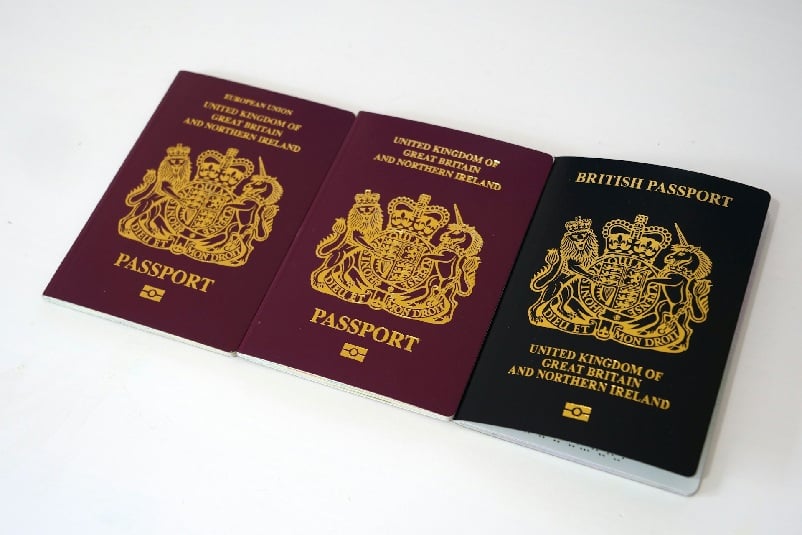Visitor Visa to Work Permit Canada
Due to a temporary change in immigration policy, foreign nationals in Canada on a visitor visa who receive a valid job offer can apply for a work permit without having to leave the country.
For more information on how to apply for a work permit as a visitor in Canada, speak to one of our immigration lawyers at IAS. Call us at +1 844 290 6312 or contact us online.
Read our 1001 reviews
Converting a Visitor Visa to a Work Permit in Canada
Restrictions on international travel and the labour market shortages during the COVID-19 era brought changes to Canadian immigration processes. One such change is the ability of individuals on a Canadian visitor visa to obtain a work permit without leaving the country. This temporary policy will be effective until February 28, 2025.
Before this new policy, foreign visitors who intended to work were allowed to submit a work permit application from within Canada to their home country’s visa office. If their application was approved, they had to leave Canada to be issued a work permit before re-entering the country.
Our lawyers at IAS can help you secure an appropriate work permit and ensure your continued legal stay in Canada. Call +1 844 290 6312 or contact us online to speak with a lawyer today.
Eligibility Requirements for Converting a Visitor Visa to a Work Permit
To be eligible for a work permit under this temporary policy, you must meet the following requirements:
- Have a valid visitor status in Canada on the day you apply.
- Have a job offer that is:
- Supported by a labour market impact assessment (LMIA) or is LMIA-exempt.
- For a minimum period of 1 year.
- Full-time, regular, non-seasonal, and paid.
- Submit an employer-specific work permit application no later than February 28, 2025.
- Meet other criteria to be admissible in Canada, including:
- Holding a valid passport throughout your stay.
- Having the skills and experience that meet the requirements for the job.
- Demonstrating ties to your home country that prove you will leave Canada once your work permit expires. You can do so by submitting documents relating to property ownership or marriage or birth certificates that show strong family ties.
- Providing a bank statement that proves that you have sufficient income to support yourself.
- Proving that you are in good health and have a medical exam, if required.
- Demonstrating that you do not pose a threat to the security of the country.
Understanding the LMIA-Approved Job Offer Requirement
In most cases, before Canadian employers can hire a foreign worker, they must get a positive Labour Market Impact Assessment (LMIA) authorization from Employment and Social Development Canada (ESDC).
A positive LMIA indicates that there are no Canadian citizens or permanent residents able to fill the job role, and the employer is permitted to hire a foreign national. An employer will get a negative LMIA if the ESDC determines that a Canadian citizen or resident should fill the role.
To obtain an LMIA, an employer must advertise the position locally for four weeks. If they can’t find a suitable candidate for the role, they can seek approval to hire a temporary foreign worker.
If you intend to get a work permit for a LMIA-required job, you must present a copy of a positive LMIA from your intended employer. The LMIA document will include the educational, work experience, and language requirements for the role. You must then submit supporting documents to show that you meet the requirements specified in the LMIA.
The LMIA application process can take up to 3 months. As such, it’s important to consider the time remaining on your visitor visa during this period. You may be able to extend your visa while waiting to apply for your work permit to ensure a continued legal stay.
The LMIA-Exempt Job Offer Option
In a few cases, employer-specific permit jobs can be LMIA-exempt. In other words, depending on the nature of the job, you can apply for an employer-specific work permit without an LMIA document from your employer.
This exemption will typically apply to you if your employer can prove that you will bring significant social, cultural, or economic value to Canada. Some LMIA-exempt job situations include:
- Individuals working as intra-company transferees.
- Professional athletes and coaches working with Canadian teams.
- Entrepreneurs who intend to set up a significant business.
Documents Required to Apply for a Work Permit
To apply for a work permit in Canada, you must provide the following documents:
- A valid passport or travel document
- Proof of your valid visitor status
- A copy of your employment contract
- A copy of a positive LMIA from your employer or an offer of employment number (if you’re LMIA-exempt)
- Proof of your educational and work experience
- Evidence that you can support yourself financially with documents such as bank statements.
- Medical examination report.
- Criminal record certificate.
- Proof of ties to your home country with property ownership documents or proof of family relationships.
How to Apply for the Employer-Specific Work Permit
You can apply for your work permit once you’ve received a job offer and prepared all required documents. The work permit application is typically completed online. However, you can submit a paper application if:
- You have a disability that prevents you from applying online
- There’s a problem with the online application
You must complete the application form, Application to Change Conditions, Extend My Stay, or Remain in Canada as a Worker [IMM 5710]. This will require you to provide information about your personal details, immigration status, marital status, and job details.
After completing the form, you must upload your supporting documents and pay the work permit application fee. Then, you can submit your application.
How Much Does a Work Permit in Canada Cost?
The work permit application itself costs CAN$155 per applicant. This fee is the same as when you’re applying from outside Canada.
Additionally, you might need to pay for translation if your supporting documents are not in English or French. The cost of translating your documents will depend on the service provider you use. Generally, it can range from CAN$35 to CAN$100 per page.
However, you won’t need to pay a biometric fee since you already submitted your biometrics when applying for your visitor visa. Your biometrics will be valid for 10 years.
What Happens After I Apply?
After you submit your application, the Canadian immigration authorities will review it. If they need more information to decide on your application, they will inform you in writing.
While you’re awaiting a decision, you can check the status of your application online.
If your application is approved, you’ll receive an immigration document confirming your new status. However, if your application is rejected, you might be asked to leave Canada at the expiration of your visitor visa.
Although you can apply to extend your visitor visa as often as you want while seeking other job offers, the immigration authorities will consider whether you have a valid reason to continue your stay in Canada before granting an extension request.
How Can IAS Help?
The process of changing a visitor status to a work permit in Canada involves several stages, which can be lengthy and complex. Also, immigration laws are subject to frequent changes, and keeping up with new information can be challenging.
Our team of lawyers at IAS can help you. We are experts in Canadian immigration law and have extensive experience with work permit applications. Our lawyers will assess your situation, including your qualifications, skills, and work experience, to determine if you meet the requirements.
We will prepare and submit your work permit application and communicate with the IRCC on your behalf. Throughout the process, we will answer any questions you have and provide updates on your application.
For more information on how we can help you obtain a work permit while visiting Canada, call us at +1 844 290 6312. We’re here to help you in person, on the phone, or online.
Table of Contents
Table of Contents will appear here.Legal Disclaimer
The information provided is for general informational purposes only and does not constitute legal advice. While we make every effort to ensure accuracy, the law may change, and the information may not reflect the most current legal developments. No warranty is given regarding the accuracy or completeness of the information, and we do not accept liability in such cases. We recommend consulting with a qualified lawyer at Immigration Advice Service before making any decisions based on the content provided.
Services we Provide
Frequently Asked Questions
It takes the IRCC an average of three months to process work permit applications. However, there could be delays in processing your application if you do not submit all your documents or fail to pay the application fee.
You can extend your Canadian visitor visa for an additional six months while awaiting a decision on your work permit application. You should apply for an extension at least 30 days before your visitor visa expires.
However, if you have held a work permit in Canada in the last 12 months and hold a visitor visa, you do not need to extend your visitor status. You can instead apply for an interim authorization to work and begin working immediately.
If you’re on a Canadian visitor visa and intend to enroll in a study program lasting more than six months, you can apply for a study permit from within Canada. You must provide a letter of acceptance from a designated learning institution (DLI) and a provincial attestation letter (PAL) from the province or territory where you plan to study.
















